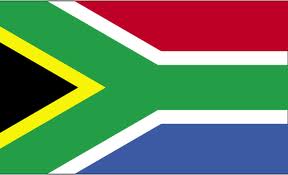International Monetary Fund IMF, said that fast growing debt has constrained policy space. in South Africa economy resulting in negative per-capita growth. The article IV consultation report also said that the poverty rate in South Africa stands at around 40 per cent while unemployment crept up to 27 per cent; almost twice that level for the youth and income inequality one of the highest globally. According to the IMF report on South Africa, “Fiscal and monetary policies were eased, but growth remained subdued. The Fiscal Year 2017/2018 consolidated fiscal deficit is estimated to have expanded to 4.8 per cent of GDP from 4 per cent of GDP in the previous year.”
It said “Monetary policy was eased by a total of 50 basis points, in July 2017 and March 2018. Nonetheless, GDP growth edged up only slightly from 0.6 per cent in 2016 to 1.3 per cent in 2017. Amid a marked growth deceleration, some of South Africa’s economic and social achievements after the end of apartheid have recently unwound. While the economy is globally positioned, sophisticated, and diversified, gaps in physical infrastructure and education create large productivity differentials across sectors. Low consumer and business confidence has dampened productivity growth.
“Major obstacles to growth included a regulatory environment not conducive to private investment, inefficiencies in SOEs increasing the cost of key inputs, labor market rigidities, insufficient competition in product markets, corruption, and policy uncertainty. Inflation moderated to 5.3 per cent and the current account deficit narrowed to 2.5 per cent of GDP in 2017. The recent political transition offers a renewed opportunity to advance reforms and exploit the economy’s potential. The stated priorities of the new administration—combating “state capture” and promoting jobs and growth—point in the right direction.
“On current policies, staff projects a modest growth recovery to 1.5 percent in 2018 and 1.8 percent in the outer years, slightly above population growth. Inflation is projected to ease to 4.9 percent in 2018 and edge higher to 5.5 percent in the outer years. The current account deficit is expected to widen to 2.9 percent of GDP in 2018 and to around 3½ percent of GDP over the medium term. This baseline scenario is subject to upside developments, but downside risks seem more prominent. Should structural bottlenecks be addressed, South Africa has broad-based potential to boost growth significantly, aided by deep and liquid financial markets, a solid domestic investor base, a floating exchange rate, and limited susceptibility to exchange rate risk, low foreign currency exposures, and rollover risk; long debt maturities and access to segments of the global financial safety net.
“However, significant vulnerabilities arise from fiscal risks related to weak and poorly managed state-owned enterprises and other spending pressures. External risks include large gross external financing needs, and a current account deficit financed by flows that are prone to sudden reversals in response to abrupt changes in global financial conditions and sovereign credit ratings. Disruption in trade flows and a fall in commodity prices would worsen the twin deficits and dampen growth.
Directors urged the authorities to deepen the fight against corruption and advance the ambitious reforms in product and labor markets to raise productivity and enhance private sector participation. They recommended the forceful application of the Public Financial Management Act to increase deterrence against corruption. Directors called for the completion of measures in the telecommunications and mining sectors to attract higher private investment and create employment.
“They noted that further progress is needed to contain fiscal risks from state-owned enterprises and rethink the business models, including by engaging in strategic equity partnerships with the private sector. Directors stressed that improved competitiveness and higher growth are critical for poverty reduction in South Africa. Enhancing education quality and labor market flexibility and leveraging the opportunities provided by digitalisation will boost efficiency and support growth. Fiscal policy needs to focus on containing the rise in public debt and building buffers against potential shocks. Reducing the high wage bill, improving the quality of expenditure, and strengthening tax administration would contribute to this objective and strengthen the role of fiscal policy in addressing inequality. Some Directors noted that the primary expenditure ceiling could usefully be accompanied by a debt ceiling. Directors commended the South African Reserve Bank’s effective inflation targeting, and welcomed the Bank’s intention to lower inflation toward the midpoint of the official target band. They noted that low and stable inflation would benefit poorer households more, who tend to face the largest burden of high inflation. Directors emphasised that monetary policy should remain cautious, paying attention to fiscal policy and upside inflation risks”.

